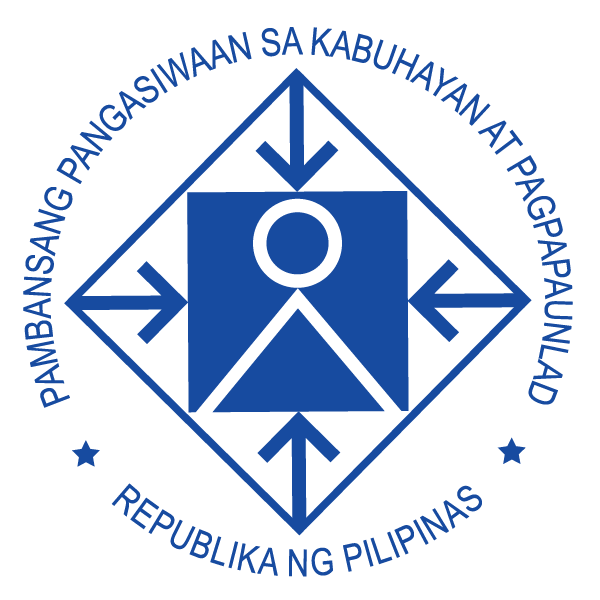Main Messages – Philippines
No Filipino is poor; no one is hungry. Filipino families live together; there is work-life balance. Everyone feels secure over their entire lifetime.
This is the AmBisyon Natin 2040 of the Philippines (AN 2040). A 2040 strategic vision that has guided the Philippine Development Plans (PDPs) on the country’s priorities in 6-year increments. The PDP 2017-2022 lays the foundation for inclusive growth, a high-trust and resilient society and a globally competitive knowledge economy. Realizing that the World We Want, as elaborated in the 2030 Agenda through the SDGs, aligns with the Life We Want, through AN 2040, the Philippines has mainstreamed the SDGs in the strategies of the PDP.
This is the Philippines’ third VNR. The first was a stock-taking of lessons learned from the implementation of the MDGs; the second reported on the progress in addressing these lessons. This year, we had hoped to report on more progress towards a whole-of-society implementation and further gains in SDG outcomes. COVID-19, unfortunately, reversed some gains and forced us to re-prioritize strategies. However, the inroads we have made on means of implementation remain. We are enhancing these institutional mechanisms to quickly recover and accelerate progress.

SDG Implementation 2016-2020
In 2016, the Philippines noted ingredients for the successful implementation of a long-term agenda:
1. Multi-stakeholder commitment spanning the long-term
2. Financing plan
3. Resiliency-building
4. Clear assignment of responsibilities
5. Effective monitoring
By 2019, the strategies to attain the SDGs were mainstreamed in our PDP 2017-2022. After our second VNR, but before the pandemic, the focus was to broaden stakeholder engagement, strengthen commitment, mobilize more resources, and to implement the community-based monitoring system (CBMS), a mechanism to monitor SDG outcomes even at the household level.
STAKEHOLDER ENGAGEMENT. The Sub-Committee on the SDGs (SC-SDGs) is a platform for a whole-of-society engagement for the SDGs. Technical Working Groups (TWGs) consisting of agencies responsible for the SDGs on Economic, Social, Environmental and Governance were established. This structure is mirrored at the subnational levels. The SC-SDGs includes a Stakeholders’ Chamber consisting of private sector and civil society for each of the four TWGs.
RESOURCE MOBILIZATION. Fiscal programming in the Philippines is deliberated in the Development Budget Coordinating Committee (DBCC). The SC-SDGs is placed within the DBCC. This facilitates the inclusion of SDG-focused programs in government expenditure. A law was also enacted to ensure funding for SDGs, using receipts from sin taxes.
MONITORING. The SDG Watch, regularly compiled by the Philippine Statistics Authority (PSA), and the CBMS, to be implemented by local government units, are the mechanisms for SDG monitoring at the national and subnational levels, respectively.
SDG Implementation 2020-present
The Philippines, as with the rest of the world, was adversely affected by COVID-19. The graph below shows the trend in daily confirmed cases, which was over 30,000 at one time, but is now less than 200.
Daily new confirmed COVID-19 cases
The government’s pandemic response was, initially, to restrict mobility, then to accelerate vaccination, when vaccines became available. The former led to economic contractions, as much as -16.9 percent in the second quarter of 2020; unemployment rate went up to 17.6 percent. However, financial assistance was provided to those furthest behind. During the first semester, 2021 compared to 2018, income of families from the bottom eight deciles increased by 5.5%, on average, while those in the 9th and 10th decile declined by 1.5% and 5.5%, respectively.
As we learned to balance economic activity and risk mitigation, the Philippines is now on its way to recovery. This experience has amplified the urgency of building resiliency and promoting innovation. The list of strategies should now include financial inclusion, savings mobilization, insurance coverage and effective social protection. There should also be greater emphasis on innovation, beginning with developing 21st century skills, encouraging research, promoting collaboration and building the knowledge economy. These new strategies should build into the previous initiatives on stakeholder engagement, resource mobilization and monitoring.
There is bound to be many more challenges, but the biggest is to remain steadfast in our commitment to achieve the World We Want.


